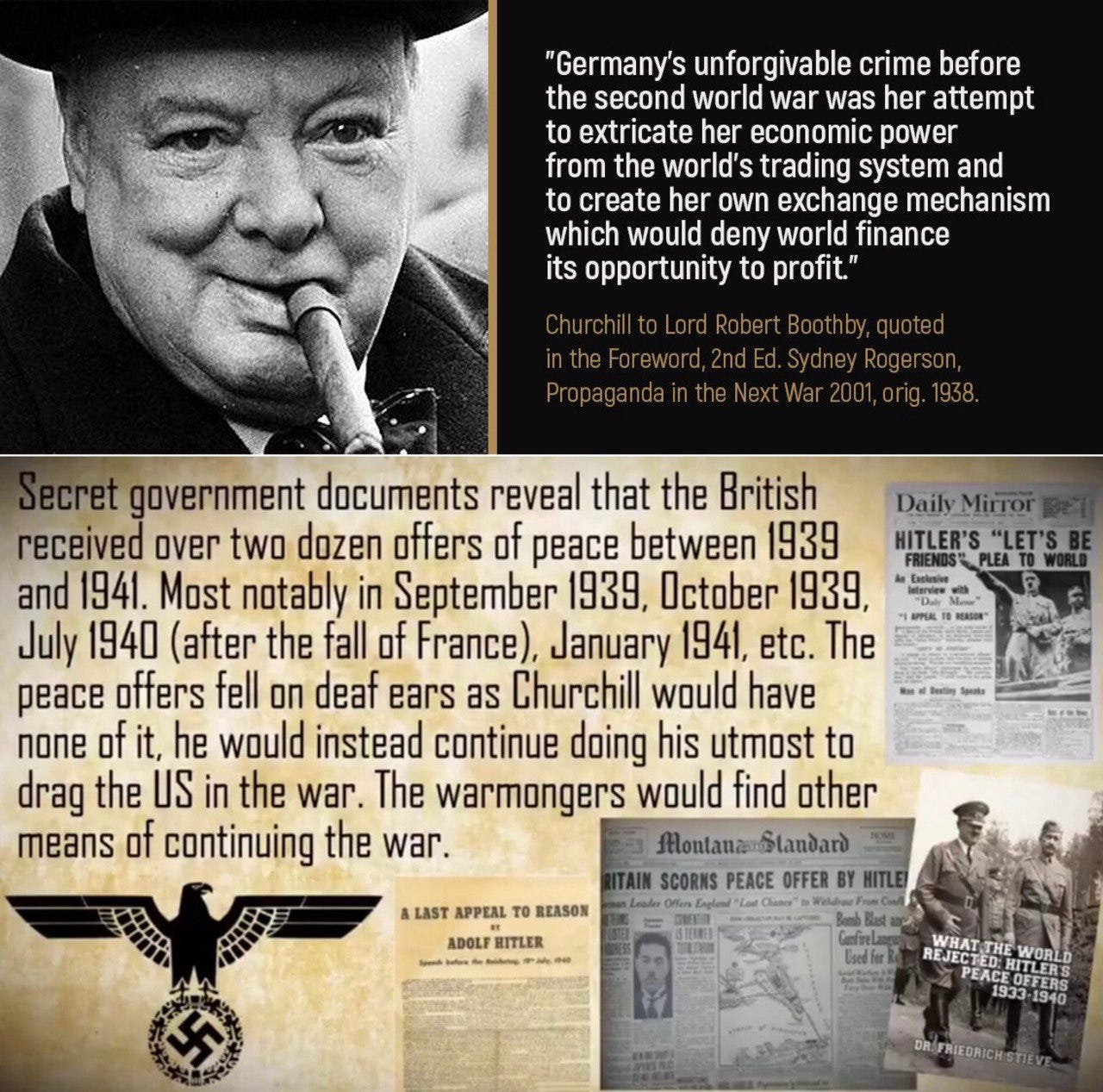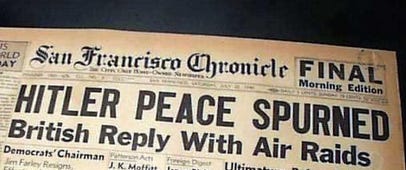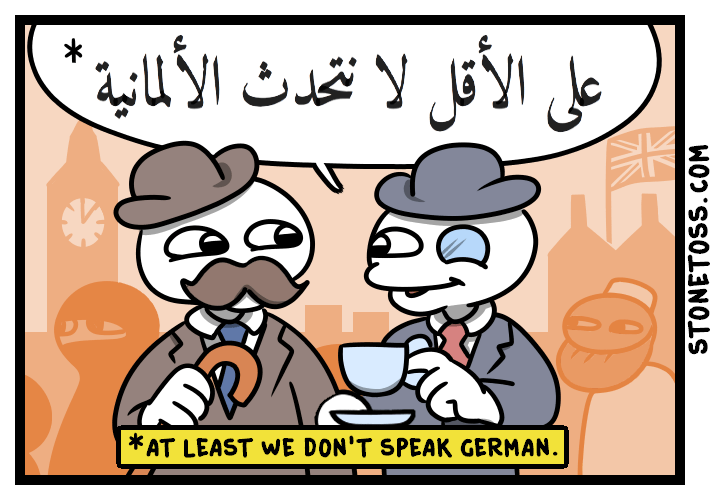The truth about the first installment negates calling for a sequel.
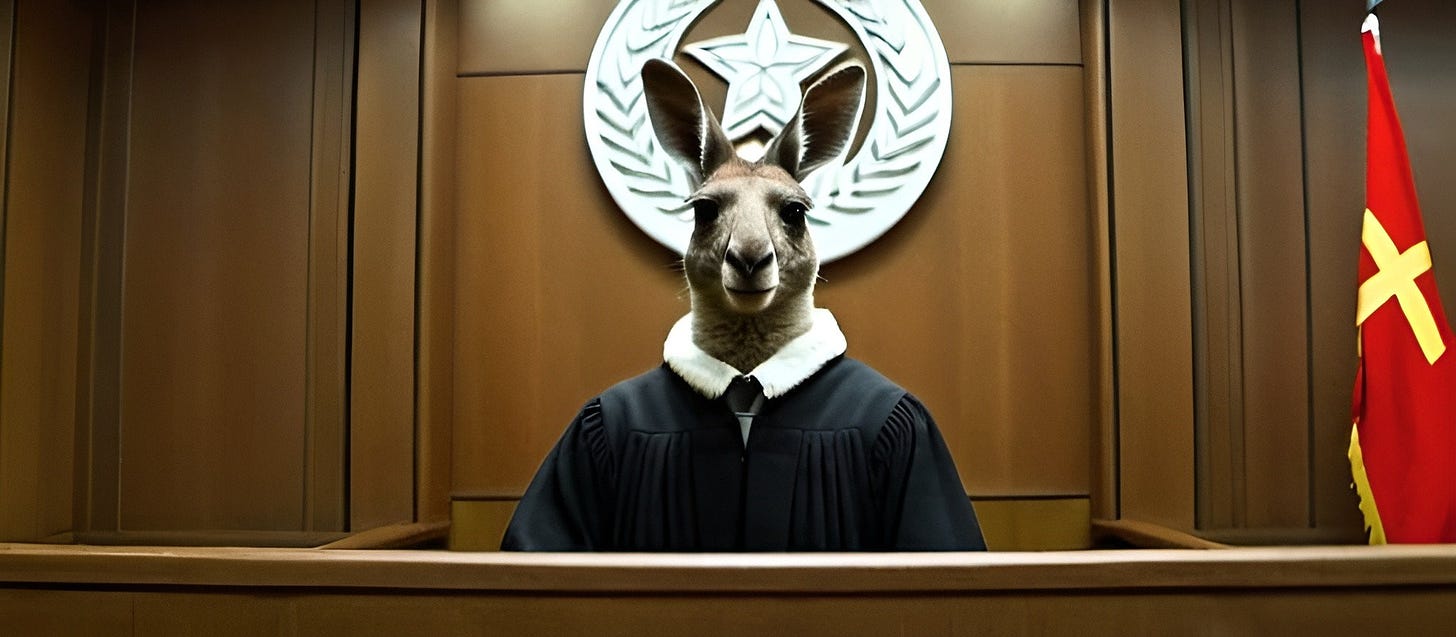
A philosophy major, communications major, and history major walk into a campus bar. The philosophy major orders three bourbons, and asks the communications major why he chose communications. “I want to be able to communicate effectively with others. I believe effective communication limits conflict and…” The philosophy major cuts him off by asking the history major the same question. “I believe nothing is more important than history, because if we don’t learn our history, then we’re doomed to…” Before he can finish, the philosophy major turns to the bartender and says, “Make it three doubles.” The bartender reaches for the bottle to top up their drinks and asks, “What’s your major then?” The philosophy major looks at the other three and says, “Psychology.”
You wouldn’t get it.
— Arthur Fleck
Rekneading Grey Matter
Calling for a Nuremberg 2 has been all the rage for the past few years. The term is often trending on social media for days. Unfortunately, the calls for a second installment have been made by a thoroughly programmed, historically brainwashed Western populace, running public schooling software infected with Hollywood-scripted malware.
Your humble fluffy Ram scribe (brain still running Commodore software) called for a second Nuremberg in early 2022, before a dedicated debugging operation that required digging into history books published before the 1990s. The lies of the past twenty years, particularly the past five, prompted a curiosity tour that begged the question, “Did they just start lying about everything twenty years ago?” The quest invariably resulted in some version of, “Not twenty years ago, but more likely two thousand years ago.”
But let’s leave classical and early civilizational history for another time and stick to the past century, particularly the most significant historical event—the war that still leads to heated debates around the actions of “our side” and the moral and ethical inconsistencies used to justify horrific acts against civilian populations and unarmed combatants in the post-war years, transgressing the Geneva Conventions while making a mockery of any judicial process at Nuremberg.
I am not taking up the defense of Germany. I am taking up the defense of the truth. I do not know if the truth exists, and many people have made arguments to prove to me that it does not. But I know that lies exist. I know that systematic deformation of facts exists. We have lived for three years with a falsification of history. This falsification is skillful. It involves fantasies based on a conspiracy of imagined fantasies. …me, I believe stupidly in the truth. I even believe that it ends up triumphing over all.
— Maurice Bardèche
1948
“The past was erased, the erasure was forgotten.”
The 1990s was a transformative period for the information and communications industries. The U.S. Telecommunications Act of 1996 monopolized the radio, and television airwaves, leaving just five corporate conglomerates controlling all information by the end of the century.
Around this time the English language publishing monopolies of New York and London began blacklisting any manuscripts or authors (think David Irving) that exposed the prevailing propaganda and criminal cover-up of Allied behavior during the second world war while revealing that certain atrocities had been astronomically inflated—a fact later disclosed with some courageous inquiry by brave individuals after the fall of the Soviet Union. Even before this time many authors, historians, academics, and public figures had been imprisoned across Europe for daring to ask any questions about the official narrative of events.
Revisiting the timeline of historical revisionism around World War 2 atrocities is an exhausting undertaking, and worthy of a dedicated lengthy post. (See The Unz Review’s American Pravda series in the meantime) One could argue the revisionism began right away against the truth, and the “conspiracy” revisionists are seeking the truth that was buried by the real revisionists.
For those who believe national loyalties and ideology are irrelevant in service of truth, it’s an essential undertaking to revisit the revised revisionism. It generally requires one to dig into the most honest and accurate accounts of events. These are most often produced when memories are still fresh, first-hand witnesses are still living, and state or tribal propaganda, myths, and fabricated atrocities have yet to flourish and take root in the public consciousness. The books that represent these ideal conditions for truth were published in the first decades after the war. This is also when the first blacklistings and book bannings began.
One French author, in particular, dared expose the crimes of post-war Allied occupation of Europe in 1948 in the book Nuremberg or The Promised Land, before lies were cemented as truths. He was the first ‘truther’ (his own words to describe what he cared about most) to expose the sham trials at Nuremberg, the crimes of the Allies including France, and the atrocity propaganda around “Jewish extermination” attributed to the Nazis which is still a crime to question in 19 European countries to this day.
Maurice Bardèche’s Wikipravda page reads as you’d expect of someone who worked as a Professor under the German occupation and was a supporter of Francisco Franco, co-authoring a book on the Spanish Civil War and founding the “revisionist school” in the post-war years.
One of the absurd charges made by France at Nuremberg and other trials was that the Germans had tried to exterminate the French, or had “a will to exterminate the French.” Bardèche exposes this absurdity using logic, reason, and facts. His anger in this assertion and other lies produced by the French government rests with the fact that it would allow a future German historian to show that France lied, thereby tainting his nation and all Frenchmen.
Photo of Paris during the occupation when Germans “tried to exterminate the French”:
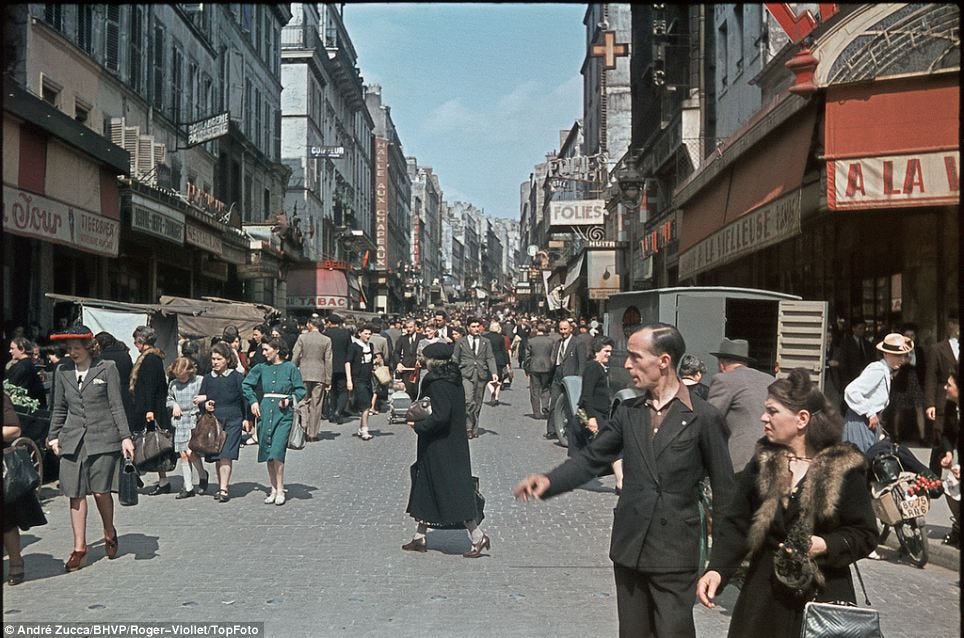
Photo of Paris today where hundreds of thousands of male occupiers camp in its plazas and at city hall. Officials are trying to “incentivize them to leave” before the Olympics in August so Paris appears respectable to the world:
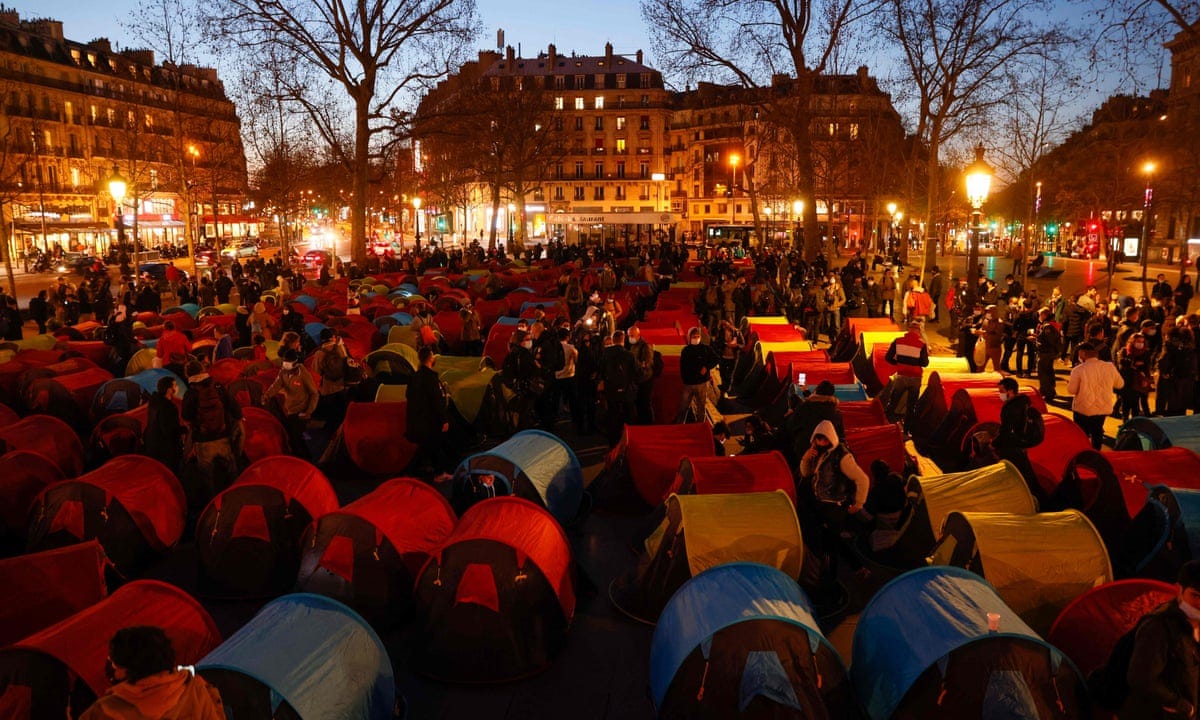
Bardèche writes:
One is propsing a future to us, one does so by condeming the past. It is into this future also that we want to see clearly. It is these principles that we would like to look at directly. For we already forsee that these new ethics refer to strange universe, a universe with something sick about it, an elastic universe where our eyes no longer recongize things.
Bardèche foresaw a future ruled by an international economic elite, that undermines nations, demonizes nationalism and civilian pride in nationality with no guarantees or respect for rights, and the political enforcement of laws against offenders who do not agree with this system, or even dare oppose it. Here he appears to be predicting our liberal democratic and neoliberal “rules-based order” with the rise of the European Union and its fashionable orthodoxies rooted in globalism, cosmopolitanism, and “democratic socialism” that labels nationalists as “far-right” heretics and “fascists.” Canada, Australia, and the United States are also firmly entrenched aboard this sinking ship that Bardèche predicted.
Regarding “the holocaust” a term that wasn’t yet used to describe alleged German “extermination camps” of Jews, Bardèche doesn’t deny them, he demands evidence of any kind to prove their existence to account for the figures, because he knew very well how war produces exaggerations and myths by victors to paint themselves as the righteous ones or liberators.
With any conflict, it becomes necessary before, during, and after the war to paint enemies in the darkest manner possible so that any crimes committed by victors look justified. On this front, the Allies over-delivered in the aftermath of the Second World War.
In the preceding years of any conflict, it’s essential to manufacture the consent of the populace who will send their young men to the slaughter. Creating conflict by rousing national fervor around the “evils” of the desirous enemies necessitates tall tales of “evil” actions, including war crimes, ethnic and racial hatreds, and a historically blood-thirty people with a crazy leader who has ambitions to conquer neighbors, enslave, subjugate, and exterminate innocents by any means at his disposal.
The victors have a monopoly on information and can tell the story of the conflict however they desire, often with an utter disregard for the truth. It is the job of historians to be unemotional, and staunchly objective while they comb over first-hand accounts, primary sources, official documents, and archives so that the truth comes to light. It is their only duty.
When historians are ignored, or in the case of the most competent and once-well-respected historian of World War Two—David Irving—they are smeared, blacklisted, arrested, and imprisoned for reporting from first-hand sources, then those myths and lies propagate as the masses bite their tongues in fear of retribution for daring to question anything. Public schools, entertainment, popular culture, documentarians, academics, and governments absorb those lies as truths and the past is erased.
Like David Irving after him, Bardèche was imprisoned for a year and fined 50,000 francs. Circulating copies of his book were collected and burned, it was banned from publication and to this day remains outlawed in France.
The lies were cemented in law, and 75 years later to question them will result in the same fate that befell Irving, David Icke, Maurice Bardèche, Fred Leuchter, and many others who simply wanted to learn the truth and share with others what they have learned—not because of political reasons, or “anti-semitism” but because they all wanted to live in a world where truth matters above all things.
The first of this group, Paul Rassinier, a history Professor of twenty-two years and editor of the resistance broadsheet The Fourth Republic became a prisoner at Buchenwald during the final year of the war when “extermination” should have been in overdrive. After the war he published his account of this famous German concentration camp, condemning the communist prisoners in charge of governing the camp as far worse than the SS officers, only “looking out for their own skin.” After touring Dachau and Mauthausen after the war, interviewing endless witnesses with either benign or contradicting testimony, and uncovering engineering and technological impossibilities, he began to question the official stories of “mass extermination” using “gas chambers” and “crematoriums.”
His first post-war book about his time in Buchenwald, and escape from a train of prisoners won him critical acclaim in France. But his second book The Lie of Ulysses daring to question the official narratives around extermination earned him labels as “fascist” and later the “father of holocaust denialism.” He was put on trial for his book in 1953 and spent two years defending his reputation before he was eventually acquitted.
In the face of heavy criticism from his own party, a socialist party in France that eventually expelled him, he continued to pursue the truth. While exposing the scam trials of German officers all around Germany by the West German government, he was barred from attending trials in Frankfurt (1963-1965) against Nazi officers and soldiers who were stationed at Auschwitz.
He argued that continuing war crimes trials were part of a Zionist and Communist strategy to divide and demoralize Europe. Rassinier cited the Zionist book L’Etat d’Israel (1930) by Kadmi Cohen to assert that Zionist and Jewish organizations were conspiring to use Nazi crimes to extort money to fund themselves and the State of Israel. In 1964, with The Drama of the European Jews, Rassinier (once a prisoner at Buchenwald in the final year of the war) concluded long before David Irving painstakingly sifted through British Intelligence intercepts of Auschwitz with not a single mention of atrocities, that there was never a policy of extermination by Nazi Germany.
Rassinier’s books were eventually translated into English, the most well-known not published until 1977 under the title Debunking The Genocide Myth. By this time the holocaust industry was well underway with its well-positioned gatekeepers controlling popular media, public education, and Hollywood cinema, ensuring that the lies became truth and that the past was erased and the erasure was forgotten.
In Germany after 1945, there were millions of biographies but there was no history. When the nation was cut in four, its history was fragmented by the political division, censorship, coverup and fear of criticizing the USA and France. No intelligent public opinion was formed on the subject because no expression of it was allowed. The occupation of Germany resulted in an occupied mentality, which attempted to subject reason to unreasoning discipline.
— James Bacque
Other Losses: An Investigation Into the Mass Deaths of German Prisoners of War after World War Two
Revanche
It’s human nature to seek revenge, but the vengeance that mirrors the atrocities of the accused undermines the scales of justice so that one monster transfers his monstrosities to his enemies. The last monster standing gets to rewrite history, cover their crimes, and showcase their retribution as “fairness” and “justice” to “prevent future crimes.” The conquered must always “learn their lesson” from the victors.
None of this ugliness and hypocrisy of war, molding attitudes of conquest or liberation is possible without effective propaganda to rally minds around a unifying goal. Official historians never cease in reminding the world of Nazi Minister of Propaganda Joseph Goebbels, and his psychological campaigns on the German people, but curiously they never speak about his British and American doppelgangers.
Before the American government began fluoridating drinking water and toothpaste (at the behest of dentists paid by Alcoa Steel Inc. who needed somewhere to dump their thousands of tons of Sodium Flouride poison, a byproduct of steel production) to calcify pineal glands and spiritually destroy Americans, the people were stubbornly isolationist. Before both World Wars, Americans wanted nothing to do with the conflicts of European Kingdoms or nations. In 1939, Americans were by a factor of nearly nine out of ten, decidedly America First.
Things had to change, but minds don’t change on their own. Psychological operations began in earnest using atrocity propaganda to manufacture consent for conflict in the way it’s still used today. The British had their version of Goebbels in Lord Robert Vansittart. In a series of radio broadcasts, Vansittart delivered hysteria and paranoia around “German evil and viciousness” claiming historically rooted atrocities went back over two thousand years. Roosevelt privately took a liking to his hate-mongering propaganda and implored OSS chief William Donovan to rebroadcast them on American radio.
Around the same time, Theodore N. Kaufman published Germany Must Perish! advocating for the forced sterilization of the German people to achieve “world peace.” The book was used as reverse propaganda by the Nazis to show that the Jewish people were plotting against them which as we all know is completely false anti-semitic propaganda (kauf kauf).
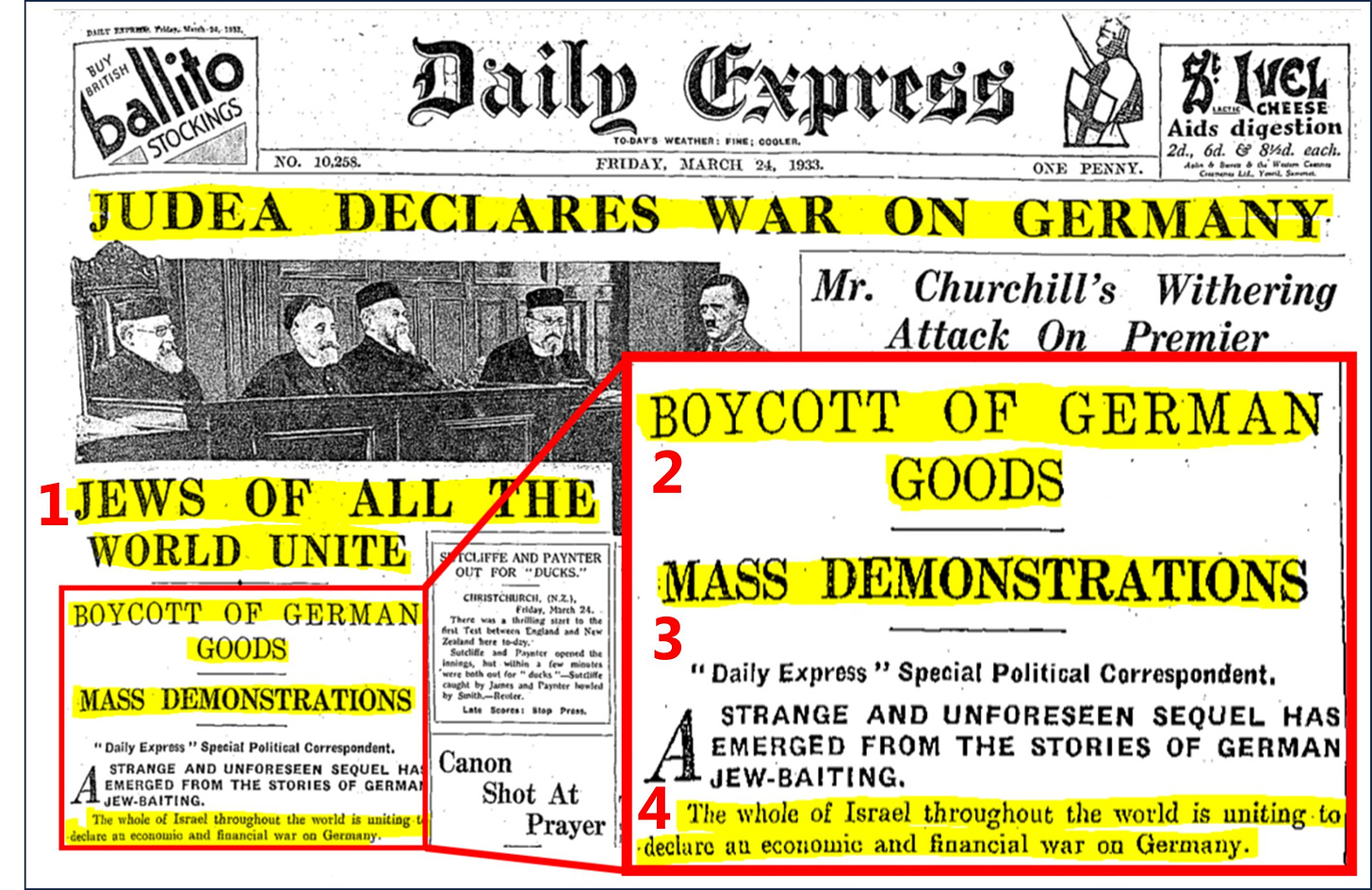
No propaganda campaign is complete without a little help from Hollywood. Roosevelt’s adviser Henry Morgenthau set up a quasi-governmental agency called the Writers’ War Board, where film director Rex Stout, also an author of popular detective novels, hand-picked other writers of sensationalist popular fiction to contribute to the Board.
The OSS propaganda arm, Office of War Information worked closely with the Board to publish articles asserting that four generations of German leaders were guided by, “adoration of force as the only arbiter, and skulduggery as the supreme technique in human affairs.” According to the WWB, it was necessary for Americans to hate the Germans to “establish the world on a basis of peace.”
The editor of the New Yorker weekly was Clifton Fadiman who served as Stout’s right-hand man in publishing paranoid delusions around the German threat. Fadiman stated that there was “only one way to make a German understand and that’s to kill them, and even then I think they don’t understand.”
The WWB advised radio stations on propaganda programming and began recruiting editors and columnists from other popular periodicals to do their bidding while promoting a book entitled Is Germany Incurable? by a “noted psychiatrist” of the time. They pushed author Louis Nizer of another book, What to Do with Germany onto the same radio programs, who advocated for trying and hanging hundreds of thousands of Germans while enslaving the rest in “labor battalions” and yet claimed that this still wouldn’t be enough to cure Germany’s “lust for war.” One of the most popular broadcasters pushing the Board’s “Hate Germany” fluff was Walter Winchell (born Isadore Lipschitz) who expressed to millions of listeners that Germany was like a snake, and “a rattlesnake never deserves another chance.”
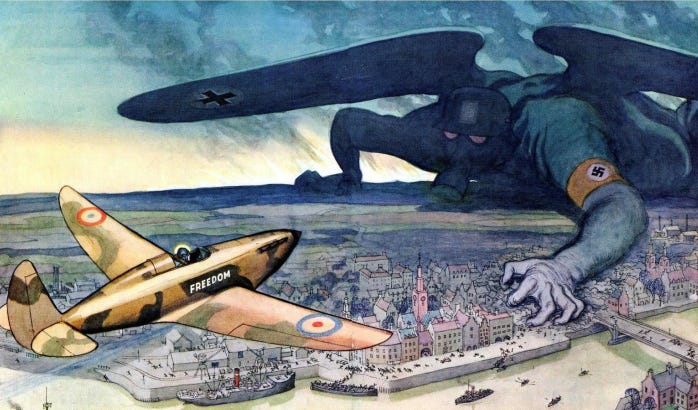
When there’s no actual direct physical threat to the homeland, a good propaganda campaign fabricates one. In this case, British intelligence forged documents to convince the Americans of an imminent Nazi threat in South America. The British aimed to create a narrative that the Nazis were gaining a foothold in South America and had plans to invade the United States. British authorities arrested South American diplomats. One poor bastard was purportedly detained with “secret documents” showing Colombian ties to the Nazis to strengthen the illusion of a Nazi infiltration into South American countries, further fueling American fears. No such threats existed.
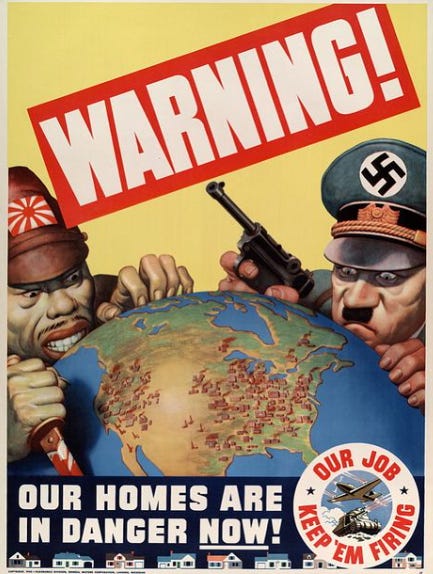
“We Weren’t ‘Evil’ Like The Nazis”
The Geneva Conventions have always been subject to interpretation and only applicable to those the victors chose to apply them. Given Allied actions against civilians during the conflict, including the fire bombings of Dresden, Hamburg, Berlin, Cologne, Frankfurt, Leipzig, Munich, Nuremberg, Stuttgart, Kassel, Würzburg, Darmstadt, Bremen, Hanover, Essen, and Duisburg, the allies were always going to excuse themselves from its standards.
The first Geneva Convention was in 1864 and outlined the treatment of prisoners of war. The thinking was that kingdoms who signed on would guarantee protections for their cannon fodder, ensuring that mandatory cannon fodder enlistments continued, and young soldiers didn’t organize against their nobility and their dreams of capturing a few more meters of soil. The general idea was that the wounded would be treated impartially and fairly, and those who surrendered were guaranteed protection.
Article 12 stated that “…wounded and sick soldiers who are out of the battle should be humanely treated, and in particular should not be killed, injured, tortured, or subjected to biological experimentation.” No mention of biological experimentation on civilians in peacetime.
The Nuremberg Trials, which began in November 1945 and concluded in 1946, are often depicted as the epitome of post-war justice. As with most history written by victors in the concealment of the truth, the trials were a confluence of injustice, witness manipulation, intimidation, threats, maltreatment, and torture with an atmosphere that seemed more predisposed to vengeance than to impartial justice.
Contrary to popular belief the post-war trials of German officers were not a single event held at Nuremberg. Only the United States and IMT (International Military Tribunal of 21 Nazi Leaders) show trials were held in this city. In contrast, the Soviets held their own, with no public record (summary executions or Gulags?). The British held their own in Hamburg, Luneberg, and Italy between 1945 and 1949. France delayed their trials of German generals (1951) and Oradour Massacre soldiers (1958), though the latter were all eventually pardoned. Trials by American rump state West Germany continued at a dozen major cities around the country from 1950 until the late 1970s.
Of the thousands of defendants over those decades, only 21 Nazi leaders were selected for the IMT, with a lot of what David Irving calls “horsetrading” of Nazi individuals going on behind the scenes among Allies seeking their version of justice, privately or publicly. Hundreds of Nazi and SS officers were permitted to escape Germany via the rat lines through Italy, with help from the OSS (precursor to the CIA), the Vatican, and friendly nations like Argentina. The American’s Operation Paperclip sent hundreds of intelligence officers into Germany embedded in army divisions to track down and recruit Nazi scientists, engineers, physicists, and anyone of military strategic importance. More Nazis were hired by the American war department after the conflict than were put on trial at Nuremberg by a factor of seven-five.
While hosting show trials, horsetrading officers among allies, and smuggling those chosen Nazi scientists and engineers through Operation Paperclip to the U.S., the remaining German POWs were kept in various camps managed by the partitioned allied zones. The United States had over 200 camps in its zone, though France took over a few after 1945, while some 1600 POW camps were scattered across French territory once managed by the Americans before also being handed over to the French. French witnesses at several camps watched as the Americans looted the supplies from camp hospitals before departing, taking generators, medicine, and food rations, often leaving the French with nothing to manage the prisoners or themselves.
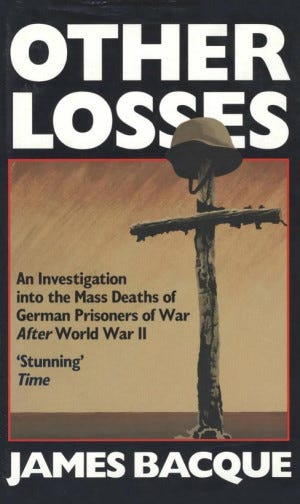
According to James Bacque’s 1989 bombshell book Other Losses, conditions in camps were harsh. Food was withheld and from the summer of 1945 through 1948 it is estimated that a million German POWs perished from starvation and disease in the hands of distinguished American General and future President Dwight Eisenhower. Under the horrendous failure called the Morgenthau Plan, a “denazification” precursor to the more charitable and pragmatic Marshall Plan, the order of the day was revenge, through suffering, starvation, and death.
In France, in January 1946, just over half a million men were nominally at work for the armies or the civilian economy. Most of these, underfed, badly clothed, weak, worked at far less than normal efficiency. Another 124,000 were so sick they couldn’t work. When 600 dying men fell off the train at Buglose near Bordeaux in the summer of 1945 before the shocked population of the village, 87 men were in such bad shape that the two-kilometer hike to the camp killed them.
According to the testimony of a German POW survivor called Hanz T. who left Bad Kreutznach at age 18, making him 12 when the conflict first began, he was shuttled with other young German prisoners for France, still wearing shorts and barefoot after being snatched from a hospital recovery room:
I only had one piece of ID showing my birthdate, 1927. I thought they might release me if they thought I was only 16, so I changed the seven to a nine, but it made no difference.
There was a real shortage of food. When the peas arrived, they were divided and once they had been shared out some were still left. Everyone counted and if we had six each, then we’d wait till we got six and a half.
Food was so scarce that people were usually sick and when you got sick they took you to hospital. When people were taken to hospital you never saw them come back. Of the hundred thousand prisoners at Rennes there was certainly a percentage who died which would make a fair number. But I’ve never been able to find a cemetery. We never saw the Red Cross, nobody came to inspect us until two years later, to bring us blankets. That was the first time they came, in 1947.
Between 1945 and 1948 anywhere from 165,000-315,000 German POWs died in French captivity, and that wasn’t the worst the Allies could do. There are endless stories of French farmers and civilians helping German POWs with potatoes, milk, vegetables, and fruits, and even French guards bringing food from home for the starving Germans, many of whom were just teenagers.
The death rate in French camps averaged around one-third, while in British and Canadian camps holding German POWs, the rate was only marginally lower in the year after the war. Prisoners starved for most of 1945, often going weeks between meals. Medical treatment and hospitals were better staffed in the camps in these zones, with some Germans receiving life-saving treatment. The Germans in this zone remember “The Tommies” treating them “like comrades” and far better than the Americans or French, but it wasn’t always keeping with the Geneva Conventions and starvation and disease were still rampant just after the war.
American camps were by far the worst, with Morgenthau’s plan for retribution German prisoners starved, and were provided no shelter, or blankets. It was all hidden under a myth of a “World Food Shortage” proclaimed at the time, despite this not affecting Canadian and British camps.
The death rate at the American camp at Reinberg was 40% in the year after the war with many prisoners dying in muddy holes they were forced to dig for their shelter. The perimeter fence around the camp stretched for nine kilometers. Prisoners would throw rocks over the fence to passing civilians with charcoal notes wrapped around the rocks written on canvas or cotton begging for potatoes, salt, and even water. Unlike prisoners in British and Canadian camps, American camp POWs weren’t permitted mail service, tents, bunks, or daily rations. The Americans (and French) lied about the death rate of prisoners, lowballing it to the International Red Cross and German town officials (now “denazified” public servants) by a factor of 30 times!
Within a few years, to doubt the Small Number had become an implied treachery, for any good German who doubted the Americans was ipso facto an enemy of both states. So the Americans were in effect forgiven without even being accused.
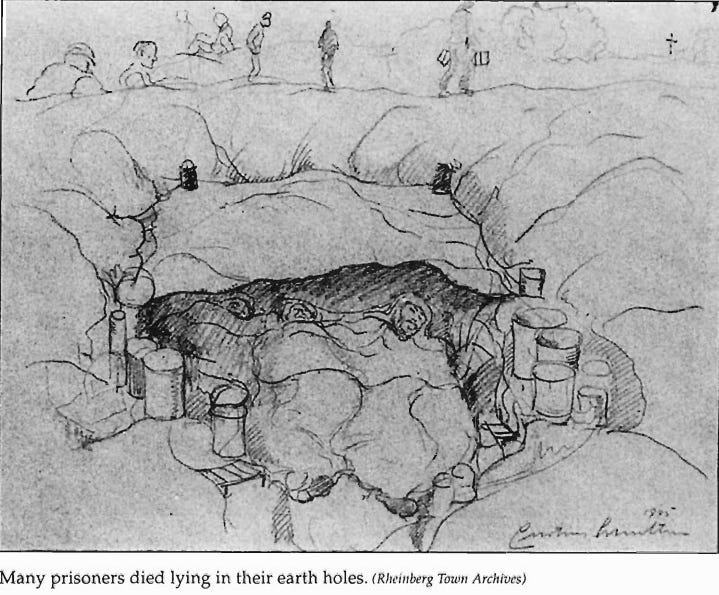
A general who knew Eisenhower well wrote in 1945 that Eisenhower was using «practically Gestapo methods» against the Germans. That general had written to his wife that the Germans were the only decent people in Europe, and that “we are destroying the only semi-modern state in Europe so that Russia can swallow it whole.”
His name was George S. Patton.
For all his prejudices, Patton represented to a high degree the honor of the army and the basic generosity of the American people. He made this very plain in a reply to a question put to him: «In all these talks [to the troops] I emphasized the necessity for the proper treatment of prisoners of war, both as to their lives and property. My usual statement was … ‘Kill all the Germans you can but do not put them up against a wall and kill them. Do your killing while they are still fighting. After a man has surrendered, he should be treated exactly in accordance with the Rules of Land Warfare, and just as you would hope to be treated if you were foolish enough to surrender. Americans do not kick people in the teeth after they are down.»
Patton openly deplored Eisenhower’s anti-German policies. Soon after, they killed him too.
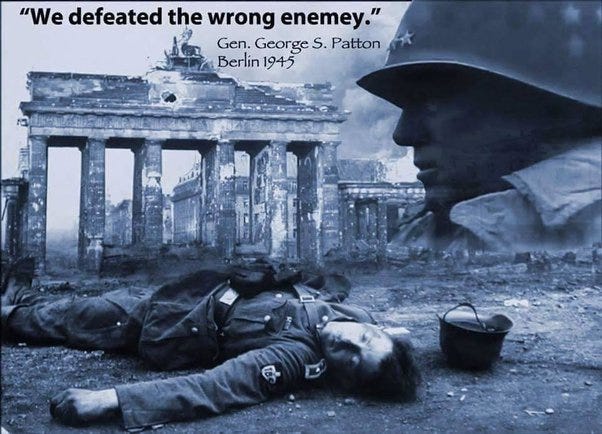
Nuremberg was a fantastic desecration of the ideals of Western Civilization, and an appalling miscarriage of justice…a misuse of evidence for vicious ends, all of which will someday be exposed as a shocking travesty of high legal and moral principles.
— Henry M. Adams
Prof. of History, University of California
The Last Battle
As early as 1943 the discussion of what to do with German officers was broached by anglosphere allies. Churchill wanted summary executions with no trials and attempted to maneuver FDR toward the same position that he held privately but not publicly. This perspective was grounded in a desire to avoid the complexities and potential embarrassments of a public trial, which could unearth inconvenient truths, including Churchill’s sponsors (who for many years made sure his five servants and manor house were paid on an MP’s salary) at the World Zionist Organization.
In 1944, during the Second Quebec Conference, Churchill drafted a proposal, sometimes referred to as the «shot on sight» list, which advocated for the immediate execution of top German figures upon their identification and capture, something young students of Western history are more likely to associate with “evil Nazi behavior” and not the allies they are brainwashed to revere. FDR was initially on board with the proposal, but the following year his successor Truman decided against the summary execution proposal and instead supported the idea of a formal trial.
According to David Irving in a book tour speech promoting his book Nuremberg: The Last Battle:
Truman (a grandmaster freemason like his predecessor) facing the ruins of post-war Europe and the daunting task of rebuilding in a way that gave his new empire the upper hand over the Soviets, decided that perhaps shooting people without trial wasn’t the best look for the shiny new superpower on the block. Nuremberg was a chance for the Allies to paint themselves as all victors do—righteous and judicious liberators, bringing the light of legal ethics to the dark deeds of the Nazis, all while ensuring the proceedings were scripted tightly enough to keep the Allies’ dark behavior from any scrutiny.
So, before the first trials at Nuremberg the British and the Americans got to work rigging them so they would eventually resemble nothing more than show trials. The establishment of the London Charter in August 1945, which defined the jurisdiction and laws under which the Nuremberg Trials would proceed, declared actions as criminal post-factum, making the trials a classic case of ex post facto law. This meant that the defendants were tried for laws that were not in effect at the time their alleged crimes were committed—a stark violation of the principle of legality as defined by the maxim «nullum crimen, nulla poena sine lege» (no crime, no punishment without a law).
Additionally, the Charter explicitly removed defenses that are normally available in criminal trials, such as the tu quoque (you too) argument, which could allow defendants to argue that the prosecuting powers had engaged in similar actions, which the Allies most definitely had, from the firebombing at Dresden and dozens of other civilian populated cities with no strategic military targets, resulting in nearly half a million German civilian deaths. Preventing the tu quoque argument ensured that allied atrocities would not be admissible as a defense, or ever brought up in court. This was the strategic significance as it curtailed any discussion of the Allies’ wartime conduct, ensuring that the focus remained solely on the actions of the Axis powers.
Removing tu quoque was also a convenience to expunge the open hypocrisies of Britain and France who declared war on Germany when Hitler invaded Poland from the west, while completely ignoring Stalin’s pact with the guilty parties to carve up Poland simultaneously from the east. If Poland was “off limits” for the British and French in keeping with the tragedy that was the Versailles Treaty, why was Stalin allowed to invade and slaughter 22,000 Poles (Katyn Massacre) from the east? Poland wasn’t just a useful tool for the Soviets, they were played by the British, French, and Americans before, during, and after the war. Before 1939 Poland was by no means innocent, given their atrocities against ethnic Germans (50k+) in Danzig, formerly East Prussia in the inter-war years. More on that in another post.
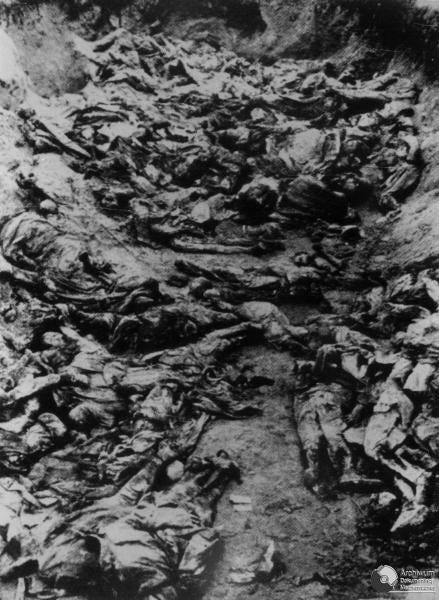
The physical and psychological conditions under which the defendants were held were abhorrent. Held in cells with broken windows throughout the harsh German winter, the accused faced severe physical duress that hampered their ability to contribute effectively to their defenses. This treatment was coupled with psychological tactics aimed at breaking their spirit. Letters written by defendants to their families were routinely intercepted and never delivered, isolating them further and severing their remaining ties to the outside world.
Witness tampering and intimidation were a matter of policy with OSS officers threatening to prosecute and hang Germans who didn’t testify against their commanding officers. Conversely, defense witnesses were harangued and in some cases disappeared so they wouldn’t appear in court. Carl Hoff, who could have provided testimony favorable to the defense, was instead declared mentally unfit and hidden away in a psychiatric facility to prevent his appearance in court. This tactic was exposed only when Field Marshal Milch, determined to bring Hoff’s testimony forward, challenged and reversed the decision, highlighting the lengths to which the prosecution would go to secure a conviction.
Rear Admiral Eberhardt Godt was intimidated into testifying against Grand Admiral Karl Dönitz. Godt was approached by American interrogators and coerced to testify falsely against Dönitz. When Godt refused to comply with the demands, he was threatened with execution if he did not cooperate.
The Nuremberg Trials were marred by significant procedural flaws, ethical violations, and a pervasive atmosphere of retribution.
The American judge, Edward L. Van Roden, one of three members of an American Army commission established to investigate claims of prisoner maltreatment found: “…all but two of the Germans, in the 139 cases investigated had been kicked in the testicles beyond repair. This was standard procedure with American investigators.”
Lower-ranking officers were assured of amnesty if they testified against the higher ranks, only to have their “amnesty” withdrawn after sealing a conviction and then using their testimony against them for a conviction.
Mock trials were arranged when prisoners refused to cooperate, with faux death sentences passed, then one final offer of “reprieve” if they confessed. Many were threatened with being handed over to the Russians if they didn’t cooperate. Some had their wives and children threatened by depriving them of their ration cards.
The treatment of the defendants and the conduct of the trials blatantly flouted the Geneva Conventions’ rules regarding the treatment of prisoners of war. By reclassifying German prisoners as «discharged enemy personnel,» the Allies circumvented these international laws, affording themselves greater leeway to impose harsher treatments and sidestep the protections that the Geneva Conventions afforded, such as the proper constitution of a court and the fair trial guarantees.
The selective prosecution at Nuremberg was evident in the charges brought against the defendants. The Allies focused exclusively on the crimes committed by the Nazis, with no corresponding scrutiny of their actions or those of other Axis powers. This selective justice was further compounded by the exclusion of any substantive examination of Soviet actions during the war, particularly the Katyn massacre, which was conveniently omitted from the trials’ scope, with one of the four “justices” overseeing the proceedings, a communist Soviet.
The manipulation of the trials extended to the evidence presented in court. Documents were selectively provided to the defense, and in many cases, critical evidence that could exonerate the defendants was withheld. This was not merely an oversight but a deliberate strategy to weaken the defense’s case, exemplifying a biased approach to the supposed pursuit of justice.
To call for a Nuremberg 2 today, is therefore to call for nothing but sham trials and a perversion of justice. It would be like asking some hospital administrators and government officials to stand trial, while torturing some Walgreens pharmacists, Pfizer interns, and urgent care clinicians into testifying against them to save their own skin, with the real criminals laughing at the proceedings.
The biggest difference between the two?
There was no war during Covid—though I have called it part of a Silent War on humanity—yet thousands more people are walking free who are guilty of (iatro)genocide than ever wore a Nazi uniform. These people have killed at least 20 million, with millions more awaiting a grim fate, figures only Mao and Stalin could match.
The returns of the second great engineered European brother war have been trickling in for decades.
How did the “victors” end up faring? Have you been to France? Have you tried to stroll Paris’ 9th, 10th, 11th, 19th, and 20th Arrondissimonts at night? How about the ghettos or Banlieues as a white woman, alone? Have you seen the state of the American empire? Have you tried to stroll through Birmingham, Watford, Bradford, Luton, Rotherham, Manchester, or East London without mistaking them for Islamabad or Bombay?
What about the nation that Britain and France declared war on Germany to save? They threw Poland (and all of East Europe) to the Bolshevik rats and sold them out for fifty years rendering the entire justifications for the slaughter moot. Half of Germany rotted under the boot of the DDR during this time, setting the stage for the next mass European brother sacrifice, another banker war.
How about Germany today after two decades run by a DDR communist witch?

If this is what “liberating” Europe looks like then perhaps Brits, French, and Germans should be camping out in front of the Academy of Fine Arts in Vienna to search for their next leaders.
Having buried the historical truths contributing to the rise of The Third Reich (it wasn’t just Versailles), they are making a redux of history all but inevitable.
The ‘strong man’ pendulum always swings back. And the next time it does, those invented fantasies that manifested atrocity propaganda against the last strong men may on a second serving finally come to fruition.
And who will the last victors have to blame for this, if not for the lies they attempted to rebuild the destroyed nations upon, in a now shattered fantastical fiction of its conjuring?
In the end, after all those assertions of “exterminating an entire race” war crimes, bloodlust, and painting the Nazis as the greatest evil to ever walk the earth, what happened to their fearless leader?
What happened to the most evil mustachioed man to lead these evil people?
There is zero evidence backing the official story that he killed himself in that bunker.
There is significant evidence that he escaped on a U-boat and lived another decade near Bariloche, Argentina with other Nazi Officers, including Joseph Mengele, coming and going by water plane from his sheltered lakeside retreat.
You might recall that thought experiment involving a time machine and killing Hitler to prevent the Second World War to save millions of lives. Every normie programmed by public school American history books that are better suited for fire kindling proclaims with a self-smug smile they’d use that time machine to kill Hitler and save the world. All their normie friends nod in agreement.
Britain and the U.S. wouldn’t have let that man who wanted to “conquer the world,” and who “gassed six bazillion Jews and cremated their bodies after turning their fat into soap and their skin into lampshades,” escape and live freely in Argentina for another decade, would they?
Of course not, they weren’t “evil” like the Nazis.
(Click CC for English Subtitles)
References (All out of print…why?)
Bacque, James. Other Losses: An Investigation Into the Mass Deaths of German Prisoners of War after World War Two. Toronto: Stoddart Publishing Co. Limited, 1989.
Bardeche, Maurice. Nuremberg or The Promised Land. Paris: Les Sept Couleurs, 1948.
Irving, David. Nuremberg: The Last Battle. London: Focal Point Publications, 1985.
Rassinier, Paul. Drama of the European Jews. Los Angeles: Institute for Historical Review, 1975.
Dresden—A Burnt Offering
A Vertigo Politix short film
